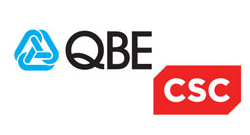
|
|
|
When a string of large-scale, high-profile retail data breaches hit last year, credit card data security stole the national spotlight and remains prominent in the minds of many consumers and industry leaders now. How can businesses better fortify their systems against the malicious activity of hackers, as well as guard against accidental mishaps that expose sensitive information? As with any security effort in this increasingly complex digital environment, it’s an ongoing dialogue, and one that requires constant vigilance and revisiting. The Payment Card Industry’s Data Security Standard (PCI DSS) is a set of guidelines for electronic payment processing. Overseen by a council formed by the four major credit card providers in 2006, PCI DSS provides guidelines to ensure a secure environment for transaction information, ultimately guarding against fraud and identity theft. The PCI’s Security Standards Council maintains the PCI DSS, revising the protocols regularly to adapt to an evolving technological landscape. In November 2013, the council issued version 3 of its standards. PCI DSS version 3 took effect on January 1, 2014, but existing PCI DSS version 2 vendors will have until 2015 to move to the new standard. Complete the form to download this resource in full. |














